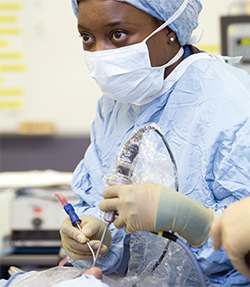
Image Credit: Mark Thomas/SCIENCESOURCE.COM
1901 ⁃ Instrument maker Alfred Hirschmann of Berlin attempts to examine the sinonasal cavity using a modified cystoscope.
Explore This Issue
August 20151910 ⁃ M. Reichert performs the first endonasal sinus surgery with a 7-mm endoscope for closure of oroantral fistulas.
1925 ⁃ Maxwell Maltz, MD, a facial plastic surgeon coins the term “sinuscopy” for a method of visualizing the maxillary sinus by placing endoscopes through the canine fossa or inferior meatus.
1960s ⁃ Harold Horace Hopkins, PhD, a British physicist, develops a rod optic system that dramatically improves resolution, widens the field of vision, and increases light intensity over previous endoscopes.
1978 ⁃ Walter Messerklinger, MD, of Graz, Austria, uses nasal endoscopes to analyze the anatomy of the lateral nasal wall and the mucociliary patterns of the paranasal sinuses.
1984 ⁃ David Kennedy, MD, a rhinologist, observes Dr. Messerklinger’s endoscopic techniques and begins working with Karl Storz, MD, to develop a set of instruments for endoscopic sinus surgery. Simion Zinreich, MD, a radiologist, develops CT parameters for sinus imaging; he and Dr. Kennedy term these new endoscopically guided diagnostic evaluations and more focused therapeutic and surgical techniques “functional endoscopic sinus surgery,” or FESS.
Source: Head and Neck Surgery–Otolaryngology. Bailey BJ, Johnson JT, Newlands SD, eds. New York: Lippincott Williams and Wilkins; 2013.